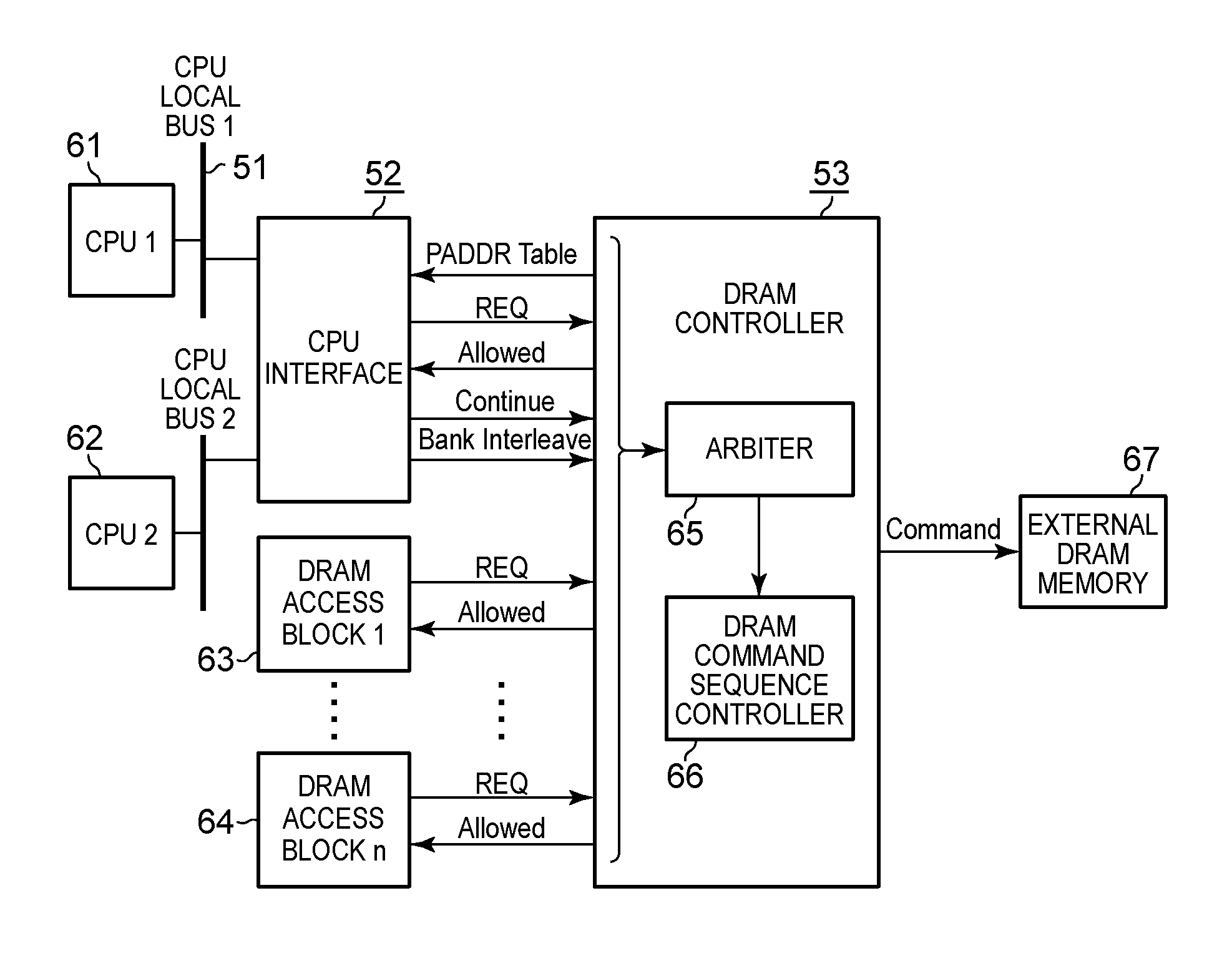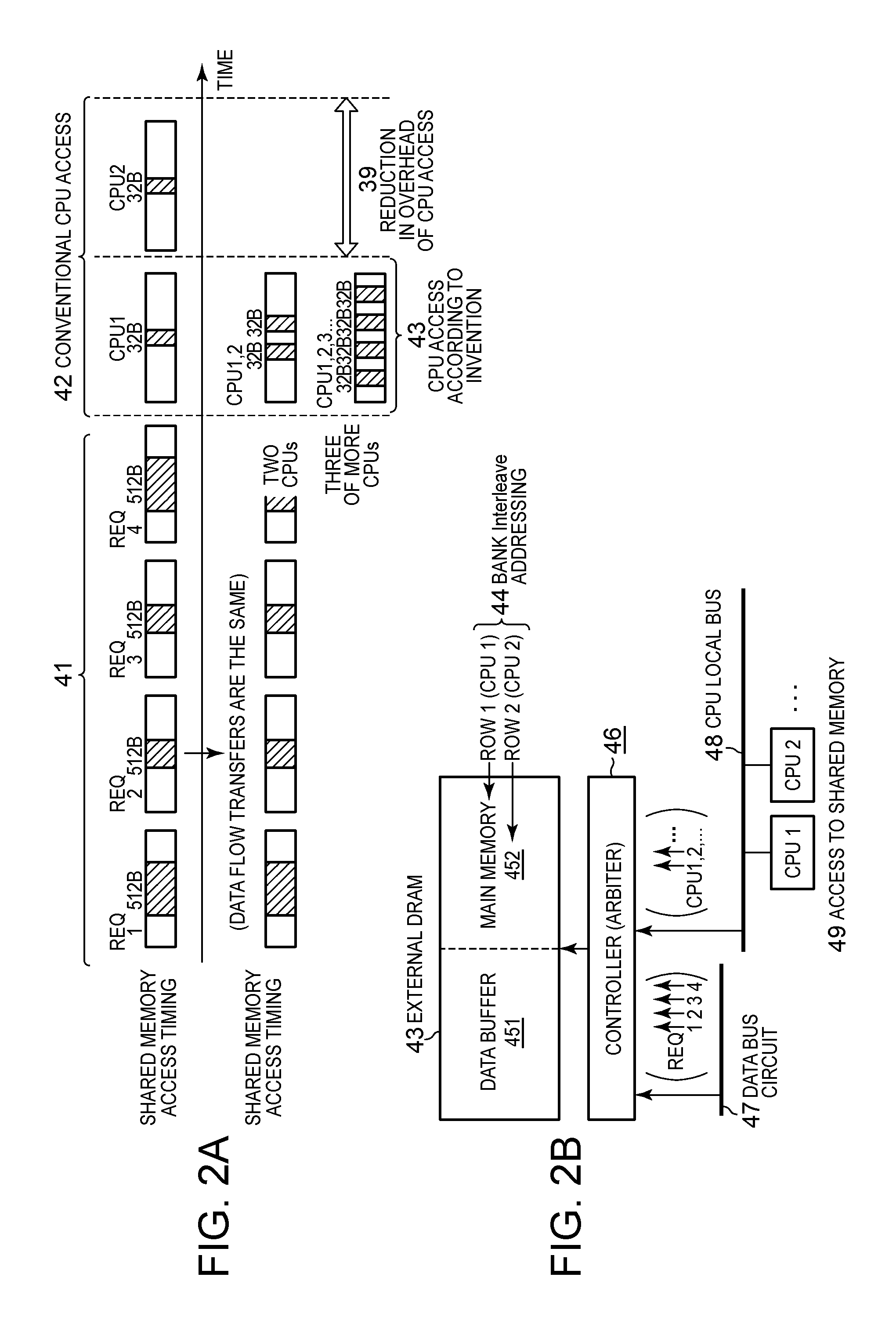Holding by a memory controller multiple central processing unit memory access requests, and performing the multiple central processing unit memory requests in one transfer cycle
a memory controller and central processing unit technology, applied in the field of memory access control, can solve the problems of reducing the performance of the cpu, reducing the power consumption and cost, etc., and reducing the overhead of data transfer. , the effect of minimizing the access delay
- Summary
- Abstract
- Description
- Claims
- Application Information
AI Technical Summary
Benefits of technology
Problems solved by technology
Method used
Image
Examples
Embodiment Construction
[0058]A DRAM access device according to a preferred embodiment (hereinafter simply called the “embodiment”) of the present invention will be described below in terms of data flows in a recording device and accesses from multiple CPUs. Note that the following embodiment is an illustrative example, and is not intended to limit the content of the present invention.
[0059]In a memory system for shared use of main memories for multiple CPUs and another data buffer memory, when a CPU access request comes, the following methods are performed:
[0060](a) When multiple main memory access requests come, if the transfer of another block is being performed, these requests are kept waiting. Then, after completion of the transfer of another block, these two transfer requests are performed in one cycle using a bank interleave (hereinafter also abbreviated as BI) defined in specifications such as DDR3 SDRAM.
[0061](b) When a certain main memory access request comes, if the transfer of another block is ...
PUM
 Login to View More
Login to View More Abstract
Description
Claims
Application Information
 Login to View More
Login to View More - R&D
- Intellectual Property
- Life Sciences
- Materials
- Tech Scout
- Unparalleled Data Quality
- Higher Quality Content
- 60% Fewer Hallucinations
Browse by: Latest US Patents, China's latest patents, Technical Efficacy Thesaurus, Application Domain, Technology Topic, Popular Technical Reports.
© 2025 PatSnap. All rights reserved.Legal|Privacy policy|Modern Slavery Act Transparency Statement|Sitemap|About US| Contact US: help@patsnap.com



